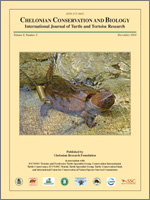During the voyage of the Beagle, Charles Darwin collected a single juvenile tortoise from James (San Salvador or Santiago) Island in the Galápagos Archipelago. This specimen, often referred to as Darwin's “pet” tortoise was returned alive to England along with 3 other small tortoises and examined by J.E. Gray. The subsequent fate of the specimen has been the source of much speculation, and recent popular publications have variously proposed that the tortoise was transported to Australia (where it supposedly lived to an age of more than 175 years) or that it remained in England but disappeared without a trace. We discovered that Darwin's pet was indeed registered into the British Museum collection in 1837 and that it is still extant and clearly labeled on the inner face of the plastron as BMNH 1837.8.13.1 from James Island. These data were overlooked for more than 170 years, and 3 curators (Gray, Günther, and Boulenger) who published chelonian catalogues between 1844 and 1889 all failed to recognize this specimen as Darwin's tortoise, mentioning it only as a stuffed juvenile of unknown provenance. Günther referred the specimen to his newly erected Testudo ephippium, subsequently regarded as endemic to Abingdon (Pinta) Island, but confirmation of the specimen's James Island origin implies that Darwin's pet tortoise is, appropriately, referable to Chelonoidis darwini.
How to translate text using browser tools
1 December 2010
Darwin's Pet Galápagos Tortoise, Chelonoidis darwini, Rediscovered
Aaron M. Bauer,
Colin J. McCarthy
ACCESS THE FULL ARTICLE





